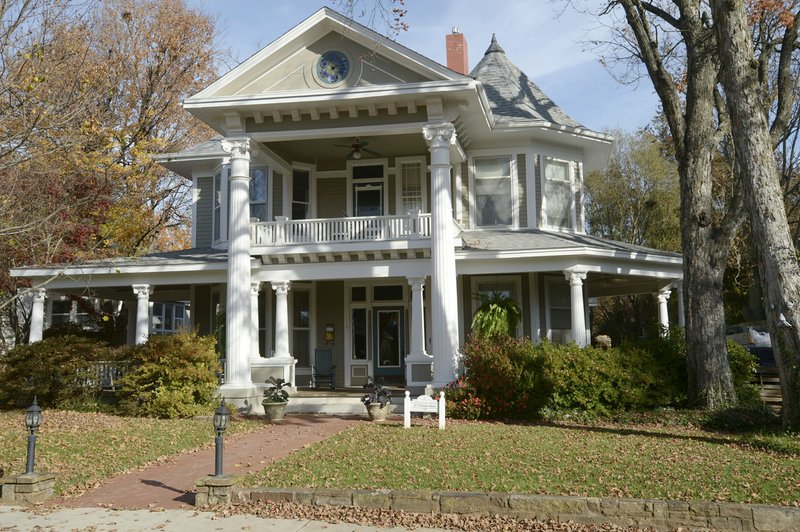FAYETTEVILLE -- Historic district commissioners hope a new measure will give them a chance to negotiate with property owners seeking to substantially alter or demolish homes in the city's historically significant areas.
The commission asked city staff members to work on a draft of a preservation ordinance. Development Services Director Garner Stoll, who started his job last month, and City Planner Quin Thompson on Thursday presented the bones of an idea using similar ordinances from other cities.
Next meeting
What: Fayetteville Historic District Commission
When: 5:30 p.m. Dec. 14
Where: Room 326, City Hall, 113 W. Mountain St.
Historic districts
Fayetteville has five historic districts on the National Register of Historic Places:
• Mount Nord Historic District: Spans one city block along Mount Nord Avenue.
• Wilson Park Historic District: Bounded by College Avenue, Maple Street, Wilson Avenue and Louise Street.
• Washington-Willow Historic District: Bounded by College and Walnut avenues and Rebecca and Spring streets, also roughly Spring, Dickson, Sutton and Lafayette streets from Olive to Willow avenues, and the junction of Rebecca Street and Willow Avenue.
• University of Arkansas Campus Historic District: Bounded by Garland Avenue, Maple Street, Arkansas Avenue and Dickson Street.
• West Dickson Commercial Historic District: Dickson Street between Arkansas and St. Charles avenues, and West Avenue between Dickson and Lafayette streets.
Additionally, the Historic District Commission and city planning department are finishing an architectural survey for a new historic district. The Meadow and Spring Street Historic District, which is the working name, would encompass an area between Dickson and Mountain streets.
Source: Staff report
Stoll, who has worked for Lincoln, Neb.; Boulder, Colo.; Austin, Texas; and Oklahoma City, said a preservation ordinance works best if it encourages conversation rather than forcing property owners to follow a mandate. Lincoln, in particular, takes that approach, he said.
For example, if a property owner wants to demolish or remodel a home in one of the city's historic districts, that person would have to get a permit. City staff would review, and if rejected, the item would go to the historic district commission.
That move would trigger a 90-day negotiation period, Stoll said. At that point, commissioners would work with the property owner in an open meeting format in which the public could comment.
"You persuade them that the value of their house is better preserved using acceptable materials and acceptable roof lines or whatever the standards are that fit the neighborhood," Stoll said.
After the 90-day period ends, the city would have to issue a certificate of allowance, meaning the property owner could go ahead with whatever he planned.
David Stewart, a member of the commission and longtime attorney, expressed some hesitation with the approach.
"With this, all they've got to do is wait the 90 days and do whatever the hell they want to," Stewart said.
Stoll pointed out that's the case right now with no ordinance in place. Plus, during the 90-day period, the City Council could claim eminent domain if it felt compelled to do so, he said.
The city has five historic districts on the National Register of Historic Places, but the city has no regulatory power over those properties. An outcry emerged this summer after it became known the nearly 150-year-old Stone-Hilton house at Lafayette Street and Willow Avenue had gone under new ownership.
The house was demolished in August. Years of neglect had put the home in a desolate state, according to the architects who examined it.
Comments on Facebook about the demolition varied from expressions of sadness to calls for action.
Attempts to create a historic preservation ordinance in the past have failed. The argument always reverts back to how property owners shouldn't be told what to do with their property, Commission Chairwoman Christine Myres said.
Thompson said demolitions require a permit regardless, but having a protocol in place would allow the commission to serve as mediators.
"In terms of an approach like this, rather than having people outside getting excited on Facebook, we would have a public process where information could be presented," he said.
The commission asked a draft of an ordinance be done within a sensible time frame. Thompson said it will likely take at least a year to have something substantial make its way to a City Council vote.
Developing the standards and guidelines will serve as the most crucial aspect of crafting the ordinance, Stoll said. Residents of affected historic neighborhoods would get a letter in the mail about those parameters.
NW News on 11/12/2017

